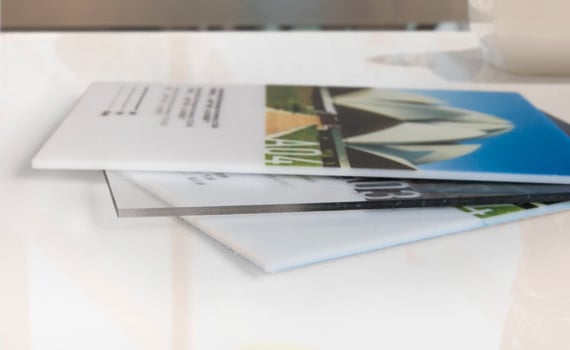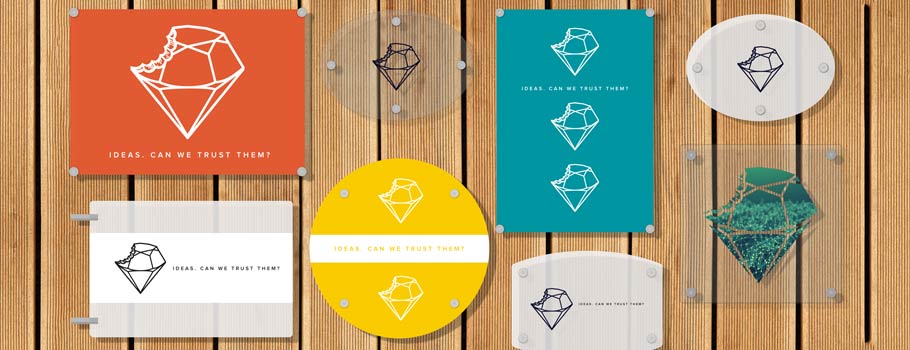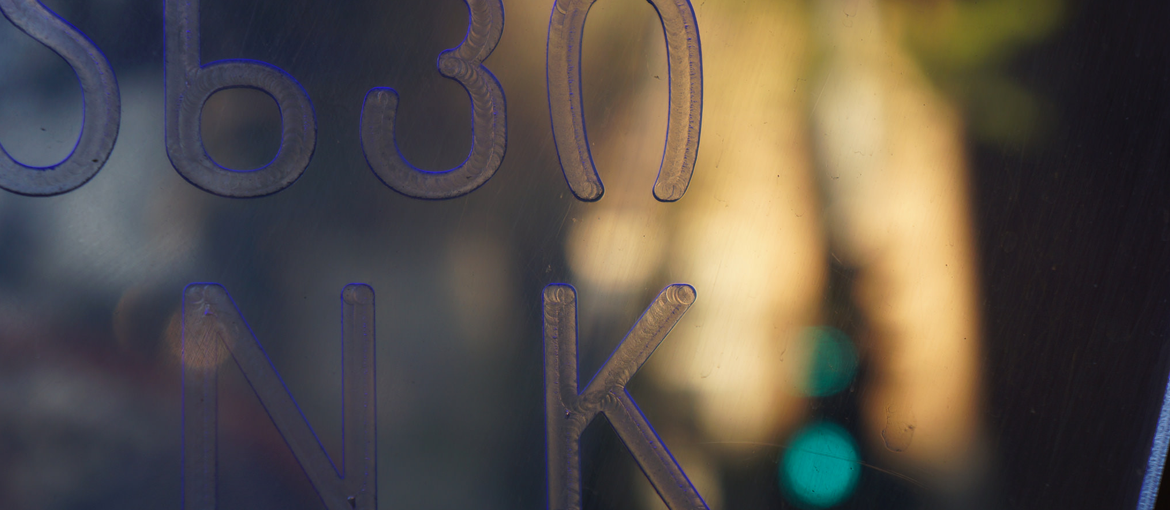If we ask ourselves what plexiglass is, a simple and correct answer is this: an excellent alternative to glass. Plexiglass is in fact a plastic material invented in the 20th century that is transparent, unbreakable, flexible, and durable used in a great many areas, including the one that is closest to our hearts: printing.
About printing on plexiglass and what plexiglass is we will discuss in this article. If you are interested in understanding what other rigid substrate printing materials are, we suggest you take a look at our articles on Forex and Dibond aluminum.
What is Plexiglass?

Plexiglass is a plastic material formed from polymers of methyl methacrylate, an ester of methacrylic acid. Technically it is called polymethyl methacrylate (PMMA for short), but it is also known by many other trade names, e.g., Perspex, Acrylite, Acrylplast, Lymacryl, Lucite Acrivill, Altuglas, Perclax, Oroglas, Trespex, and Vitroflex. Besides these there is the most famous name, and the first: Plexiglas.
As mentioned, Plexiglass is an excellent alternative to glass. That is why it is also called acrylic glass and is one of the most widely consumed plastics. Unlike glass then it is unbreakable, very flexible and even more transparent (its transparency coefficient is 0.93, while that of glass ranges from 0.80 to 0.90).
In contrast, plexiglass scratches quite easily-so it is not suitable for uses involving mechanical wear-and tear-and attracts dust. It also tends to yellow over time.
The positive characteristics of plexiglass, make it a material suitable for many purposes: from architecture to biomedicine to engineering. But the area of use we are most interested in is obviously one: printing on plexiglass. We will tell you about that in a moment, now let’s briefly tell you how and where plexiglass originated.
Brief history of plexiglass
In an article about what plexiglass is, some historical background cannot be missed. As is often the case with materials in common use today, the birth of plexiglass occurred in Germany during the 20th century.
The idea came in 1901 to chemist Otto Röhm, but it took him more than 30 years to figure out how to commercialize it. It was 1933 when, thanks to the support of colleague Walter Bauer, Röhm and his company Röhm & Haas launched the first plexiglass onto the market.
For fans of the history of materials and technology, we recommend checking out this page on the invention of plexiglass.
Plexiglass printing

Plexiglass printing can be used to print plexiglass signs, billboards or photos in large or medium format. It is a solution-suitable for both indoor and outdoor use-that can be creatively harnessed to make exhibition booth setups or furnish an apartment. Or even create a modern design for your event’s information point. Plexiglass plaques, on the other hand, can be used for your office or museum signage.
In addition to flexibility and durability, there are two features of plexiglass that you can play with printing on: plexiglass is easy to shape and is transparent. This means you can create the plexiglass sign in the shape you prefer or decide to backlight a photo on plexiglass printed on an opal backing.
Printing on plexiglass with Pixartprinting

On Pixartprinting’s portal you can choose there are several options: large format printing on a rigid substrate or plexiglass plaque printing.
You can choose the first option for printing plexiglass signs, advertising panels or photos. In this case you can choose between two different panel thicknesses – 3mm and 5mm – and between a transparent panel (which can be used as a classic alternative to glass) or a backlit opal one. The maximum area is 200x300cm for the customizable format, while you can choose different standard rectangular or square formats. Remember: it is possible to shape your plexiglass panel!
For printing plexiglass plaques, you can choose a 5mm-thick transparent backing or a backlit opal backing with 3mm and 5mm thickness. In this case the shaping is not completely free, but you can choose from 14 different shapes and sizes and a customizable rectangular format.
As always, we advise you to read well the instructions for creating the file to be sent to print and to activate operator file verification to be sure you are sending to print a file suitable for your needs.
Here we have explained what plexiglass is and what are the advantages of printing on this material. What experience do you have with this type of substrate?

